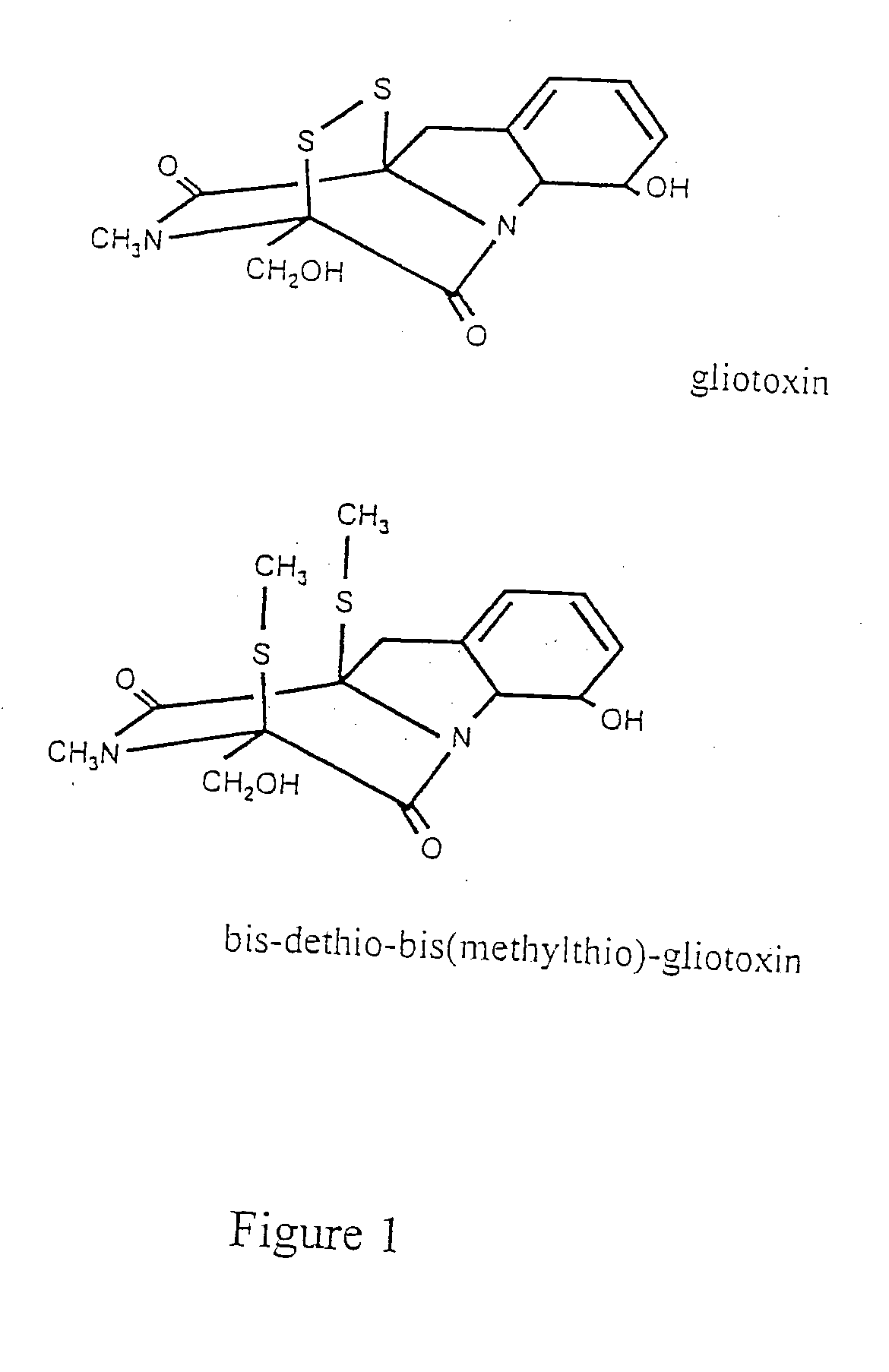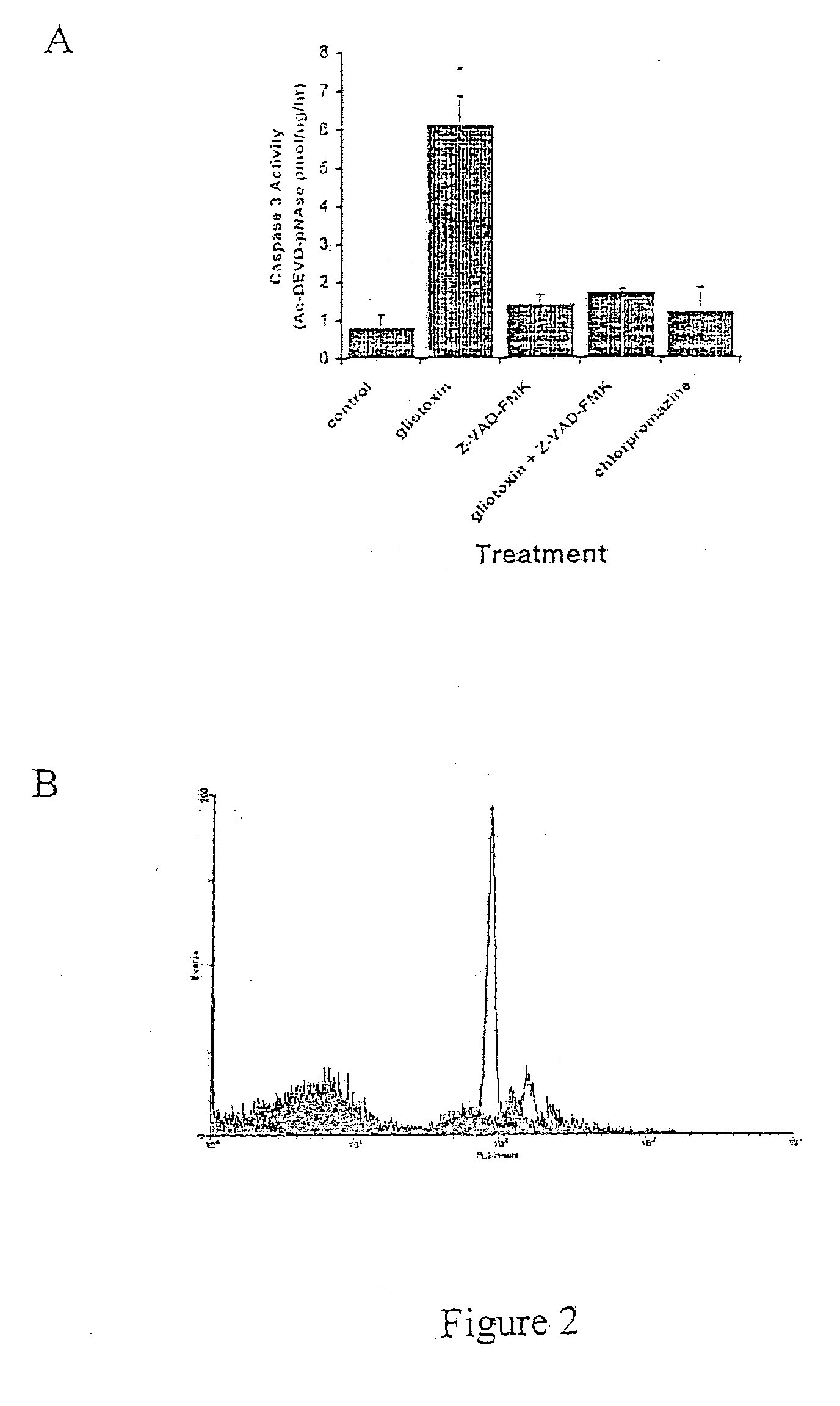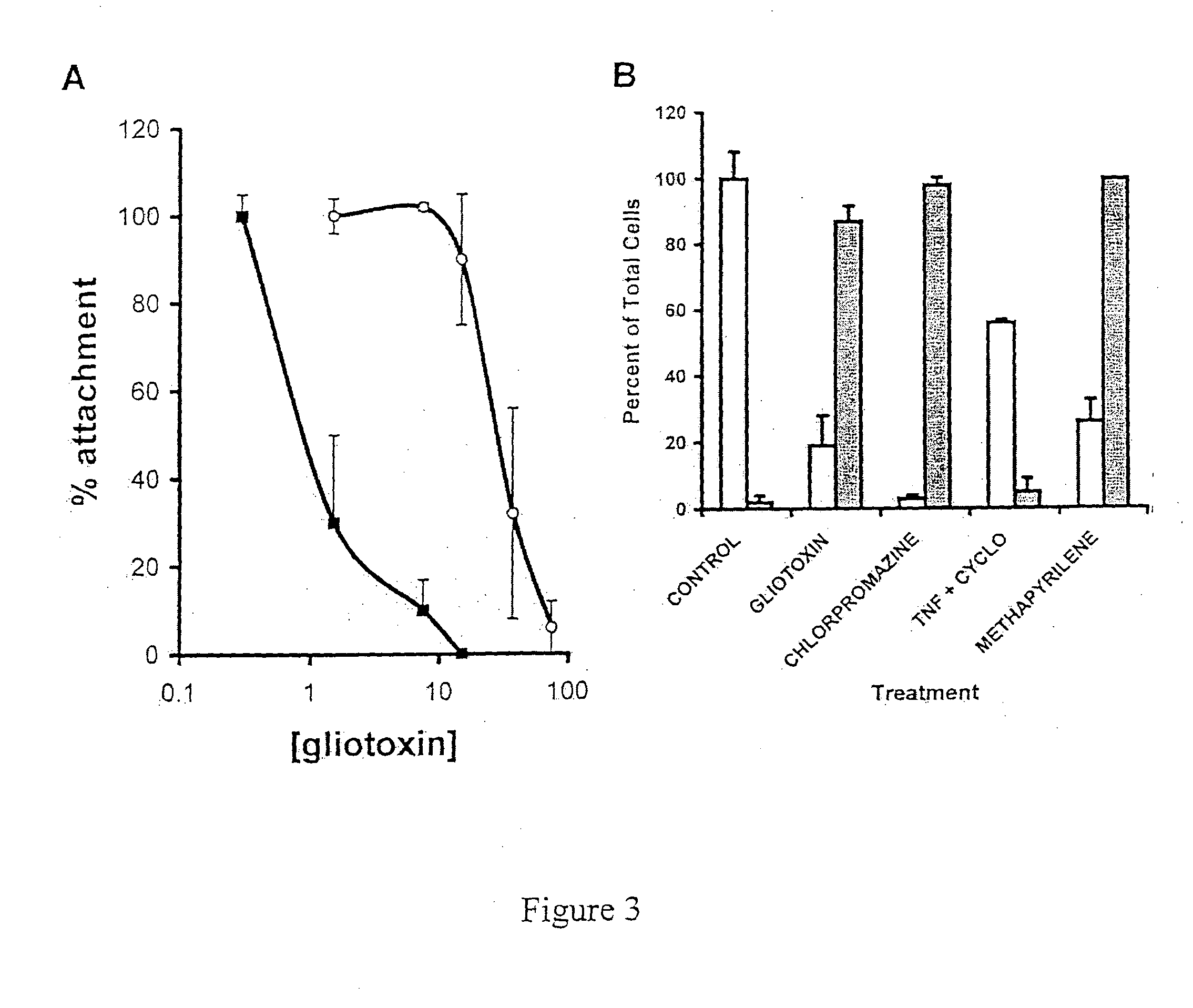Treatment for liver disease
a liver disease and treatment technology, applied in the field of liver disease treatment, can solve the problems of increasing the impairment of liver function, increasing the fibrosis, and progressively increasing the severity of the disease, so as to prevent the buildup of fibrotic material and promote or enhance the resolution of liver diseas
- Summary
- Abstract
- Description
- Claims
- Application Information
AI Technical Summary
Benefits of technology
Problems solved by technology
Method used
Image
Examples
example 1
Demonstration of the Selective Induction of Hepatic Stellate Cell Apoptosis by Gliotoxin and Regression of Liver Fibrosis in an In Vivo Model Following Administration of Gliotoxin
Materials & Methods
Reagents
[0138] Male Sprague-Dawley (200-225 g) rats were purchased from Charles River (Margate, Kent, England). Gliotoxin, bis-dethio-bis(methylthio)-gliotoxin (mt-glio), carbon tetrachloride (CCl4), [m]-iodobenzylguanidine (m-IBG), and pyrrolidine dithiocarbamate (PDTC) were purchased from the Sigma Chemical Co., Dorset, England. Calcein-2AM, fluo-3AM, Caspase inhibitor 1 (Z-VAD-FMK), and quin-2-am were obtained from Calbiochem, Nottingham, England. Tetramethylrhodamine methylester (TMRM) was supplied by Molecular Probes, Eugene, Oreg. All other chemicals were of the highest purity available from local commercial sources.
Liver Cell Isolation, Culture, and Treatment
[0139] Rat hepatic stellate cells (HSCs) were isolated by pronase / collagenase perfusion and purified by isopycnic den...
example 2
Demonstration that Apoptosis of Hepatic Stellate Cell Apoptosis is Inhibited by the Action of TIMPs
Materials & Methods
Isolation of Human and Rat Hepatic Stellate Cells
[0243] Human hepatic stellate cells were extracted from the margins of normal human liver resected for colonic metastatic disease as previously described (Iredale et al., Clin. Sci., (1995) 89: 75-81). Rat hepatic stellate cells were extracted from normal rat liver by Pronase and collagenase digestion and purified by centrifugal elutriation as described (Arthur et al., J. Clin. Invest., (1989) 84:1076-1085). Extracted hepatic stellate cells were cultured on plastic until they were activated to a myofibroblastic phenotype after 7 to 10 days. Human and rat hepatic stellate cells were used for experiments after activation in primary culture or before fourth passage. Cells were cultured in Dulbecco's modified Eagle's medium in the presence of 16% fetal calf serum and antibiotics.
Effect of TIMP-1 on Hepatic Stellate ...
example 3
Antagonists of 5HT2 Receptors can be Used to Stimulate Hepatic Stellate Cell Apoptosis
[0283] Total RNA was extracted from freshly isolated rat hepatic stellate cells, hepatocytes and 10 day cultures activated hepatic stellate cells from which cDNA was reverse transcribed using random hexamers as the primers in all cases. The cDNAs were then primed with oligonucleotides specific to the rat 5-HT2A, 5-HT2B and 5-HT2C receptors and amplified using PCR for up to 40 cycles before agarose resolution.
[0284] PCR demonstrated that the mRNA for the 5-HT2A receptor was present in both freshly isolated and 10 day culture activated hepatic stellate cells as well as freshly isolated hepatocytes. The mRNA for the 5-HT2B receptor was only found in 10 day culture activated hepatic stellate cells, whereas the mRNA for the 5-HT2C receptor was absent from all cells investigated. Western blots performed with rabbit anti-5-HT2A polyclonal antibodies also indicated that 5-HT2A receptor protein was presen...
PUM
| Property | Measurement | Unit |
|---|---|---|
| Dimensionless property | aaaaa | aaaaa |
Abstract
Description
Claims
Application Information
 Login to View More
Login to View More - R&D
- Intellectual Property
- Life Sciences
- Materials
- Tech Scout
- Unparalleled Data Quality
- Higher Quality Content
- 60% Fewer Hallucinations
Browse by: Latest US Patents, China's latest patents, Technical Efficacy Thesaurus, Application Domain, Technology Topic, Popular Technical Reports.
© 2025 PatSnap. All rights reserved.Legal|Privacy policy|Modern Slavery Act Transparency Statement|Sitemap|About US| Contact US: help@patsnap.com



